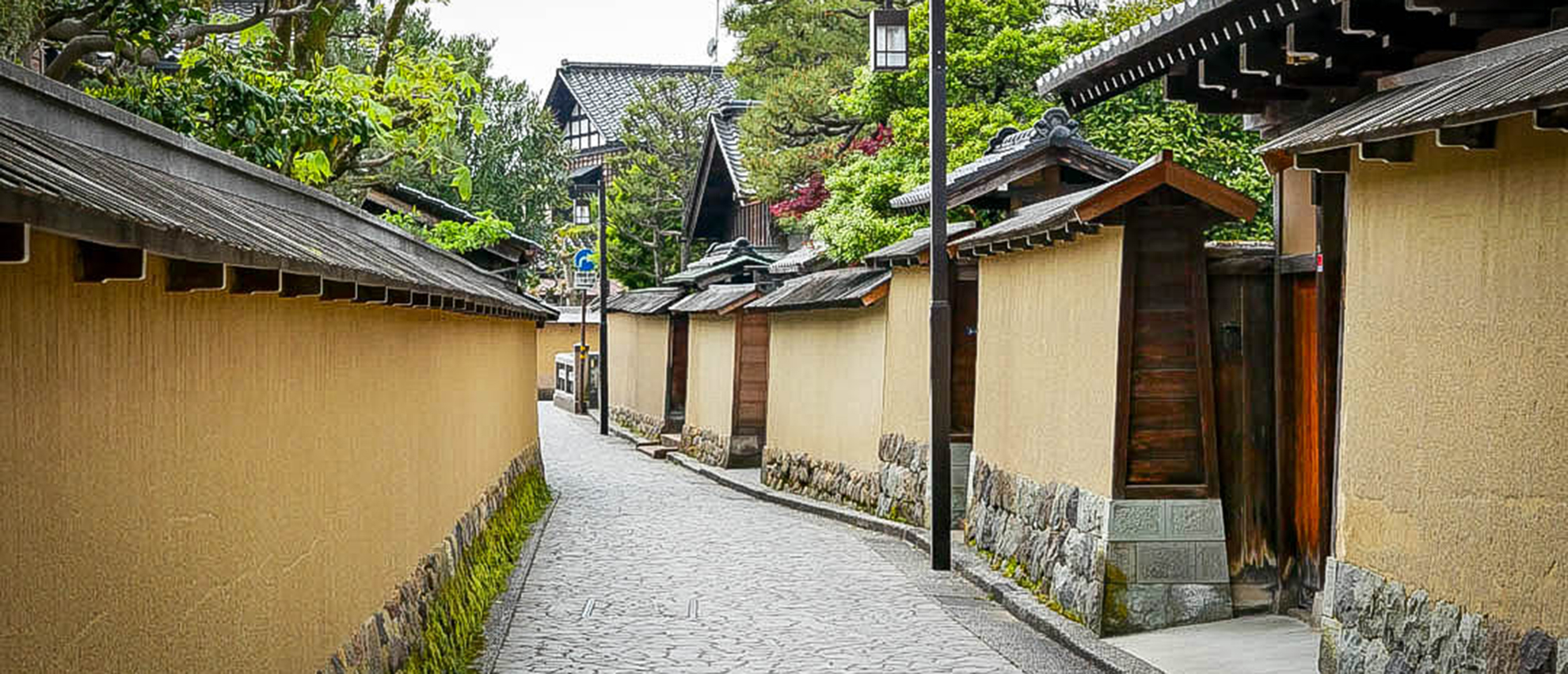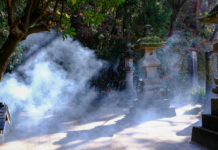History has been kind to Kanazawa. Incredibly, the city survived countless fires over time as well as bombings during World War II. As a result, traveling here gives visitors the opportunity to see well preserved historic neighborhoods. One of these, the Nagamachi District, offers a rare chance to glimpse the lives of samurai during feudal Japan.
Orientation of the Samurai District
The Nagamachi District is bordered by two moats that once supplied water to the castle. The older of the two moats dates from 1590. Between these canals lie traditional houses of mid to high-ranking samurai. Some of these have been turned into museums, some are now shops and restaurants, and others remain private homes.

While it’s not a big area, the cobblestoned streets lined with the earthen walls of the houses look so perfect, they don’t feel real. When visiting in cold months, look out for the handwoven rice-straw sheets lining the walls to protect them from snow.

The Notable Nomura House
Our top choice of the houses in the samurai district is the Nomura Clan Samurai House. This restored house is a wonderful example of traditional Japanese architecture. Highlights of the artefacts on display include katana blades, letters, and a fierce suit of armor with a hairy moustache.
The most famous feature of the Nomura House, though, is the garden. This garden has been carefully designed and landscaped to look perfect from every angle throughout the house. It is also visible from the second floor, where there is a matcha tea service. Admission is ¥550.


More to See and Do in the Nagamachi District
Free sites in the samurai district include the Ashigaru Shiryokan Museum, which housed the foot soldiers, and the Takada House, which also has a garden, although not as spectacular as the one at the Nomura House. Most of the displays at these sights are in Japanese only.
Not a samurai house, but worth a look for its quirk and charm, is the Shinise Kinenkan Museum. This building is more recent than most of the other sights in this Kanazawa neighborhood, but is a great example of the shops of the merchant class in the Edo period. Exhibits include a recreation of the original Chinese pharmacy as well as a selection of local arts and crafts. Admission is only ¥100.

Local Ceramics
For more arts and crafts, check out Kaburaki, a Kutani-yaki ceramics shop in one of the houses in the Nagamachi District. Kutani-yaki is a local style, iconic for its colorful overglaze painting and intricate designs. Indeed, Kaburaki functions as a museum for the style as well as a shop.
You can also have tea and snacks in their private garden, eating off Kutani-yaki, of course! Prices vary, depending on whether the pieces have been made in a factory or by an artist, but you can find some beautiful gifts and souvenirs.


Information
To get to the Nagamachi District, take the Kanazawa Loop Bus and get off at the Korinbo stop. Head downhill on Seseragi Street, and look out for the blue signs to direct you to the samurai neighborhood.
Post by Japan Journeys.
















